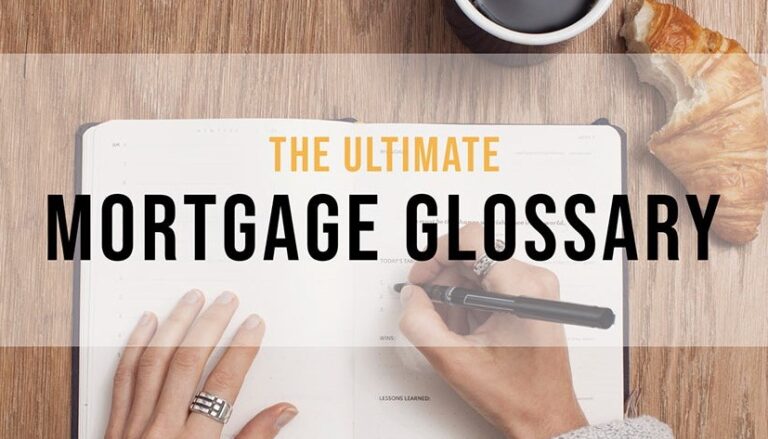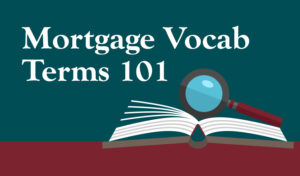
An adjustable rate mortgage is one in which the interest rate on the loan changes at a predetermined time, as often as once a year. There is typically an initial “teaser” period when the interest rate is especially low — even lower than that of a fixed-rate mortgage. After that, the interest can go either up or down based on market conditions.
Amortization describes the process of paying off a loan, such as a mortgage, in installment payments over a period of time. Part of each payment goes toward the principal (the amount borrowed), while the other portion goes toward interest. A typical home loan might amortize over a 15-, 20- or 30-year term.
Earnest money is a deposit a homebuyer makes when entering into a purchase and sale agreement for a home, generally as a sign of good-faith intent. The deposit is typically held by a title company in an escrow account. When the home sale closes, the earnest money goes toward the down payment or closing costs. If the sale falls through, the deposit is either returned to the buyer or given to the seller, depending on whether the reason for termination was permitted in the purchase and sale agreement.
Equity is the percentage of your home that you own outright. It’s debt-free, representing the portion of your home that is paid off (and/or that you paid for directly, via your down payment. If a home is valued at $200,000 and your mortgage balance is $100,000, your equity is $100,000.
An escrow account — also called an impound account — is an account that holds the portion of a borrower’s monthly mortgage payment slated for homeowners insurance premiums and property taxes. Escrow accounts also hold the earnest money the buyer deposits between the time their offer has been accepted and the closing.
FHA loans are mortgages backed by the Federal Housing Administration (FHA). That means the FHA is insuring them; should you default, it’ll repay the lender — thus reducing the risk of the lender (who actually finances the loan). As a result, FHA loans often have more lenient credit requirements and lower down payments than conventional loans; they’re especially popular with first-time homebuyers.
A fixed-rate mortgage is a loan that carries the same interest rate for the entire term (life of the loan) — in contrast to an adjustable rate mortgage, whose interest rate fluctuates based on market conditions. Borrowers can only change the interest rate on a fixed-rate mortgage by refinancing it.
Foreclosure is what happens when a homeowner stops making payments on their mortgage; this default allows the lender to take possession of the home, as it acted as collateral for the loan. Foreclosure allows a mortgage lender to sell the home and recoup the money it’s owed.
The interest rate on the loan represents what the lender is charging someone to borrow money. It’s expressed as a percentage applied to every mortgage payment. The interest rate a lender charges reflects market trends, but also the degree of risk involved. Short-term loans often carry lower interest rates than long-term ones (since the lender is getting its money back sooner) and people with better credit scores can often get lower interest rates than applicants with a challenged credit history.
A jumbo loan is a loan for larger and/or more expensive properties — those higher than the general federally-set standards, known as the “conforming loan limits.” Most mortgages fall within these conforming limits, meaning banks are only allowed to lend out a certain amount based on the geographic region where the home is located.
A loan estimate is a standardized, three-page document containing details about a mortgage, given to a borrower when they apply for a loan. The loan estimate includes estimates of the interest rate, monthly payment and the total closing costs, and also taxes, insurance, prepayment penalties and other important information about the loan.
The loan-to-value ratio, or LTV ratio, is used by mortgage lenders to compare the loan amount against the property value. Typically, an LTV ratio of 80 percent or less — which corresponds to a 20 percent down payment — is ideal. With a conventional loan, an LTV ratio greater than 80 percent means you’ll need to purchase mortgage insurance, an extra expense.
Mortgage insurance is typically required on home loans where the buyer makes a less-than-20 percent down payment. The premiums are paid by the borrower, usually as part of their monthly mortgage repayment. This extra charge acts as advance compensation for the lender in the event that you default on your loan, helping it recoup its funds. There are two basic types: private mortgage insurance (PMI), and mortgage insurance premiums (MIP) loans.
An origination fee is charged by a lender for initiating and processing your loan. The fee also covers the cost of underwriting the loan. In most cases, the origination fee on a mortgage amounts to between 0.5 and 1 percent of the total loan amount and must be paid at the time of closing.
PITI is an acronym for the four typical parts of a mortgage payment: principal, interest, taxes and insurance. The portion of your payment that covers principal, or the amount borrowed, and interest goes to the lender as repayment for the loan. Another portion covers property taxes and homeowners insurance premiums, and may go into an escrow account.
Borrowers can purchase discount points, aka mortgage points to lower the interest rate on their loan. Typically, one point costs 1 percent of the loan amount and lowers the rate by 0.25 percent, but there are lenders who lower the rate by more or less. The cost of points is included in the loan estimate, and the borrower pays for them at closing. In general, borrowers buy points to cut interest over the life of the loan.
Preapproval is a preliminary status in applying for a mortgage, and often a key early step in the home-hunting process. It is an agreement in principle between borrower and lender, indicating the lender is willing to provide a specific amount of money to buy a home. It doesn’t mean the borrower is guaranteed a loan, but it demonstrates that the homebuyer is in a strong position to get financing (which they can demonstrate to sellers in the form of a mortgage commitment letter). Preapproval generally has greater significance than a prequalification, which is essentially a faster but less-formal preapproval process.
Mortgage principal is the amount you originally borrow from the bank — the amount of your loan. Interest, by comparison, is what the bank is charging you to borrow the money.
Private mortgage insurance, or PMI, is a type of coverage a borrower is required to purchase when making a down payment of less than 20 percent for a conventional loan. PMI protects the lender — not the borrower — from loss if the borrower stops making payments on the loan.
Borrowers who already have a mortgage can refinance to a new loan with a different rate, term or both, using the new one to pay off the existing one. Borrowers don’t have to refinance with the same lender that holds their current mortgage. One common reason for refinancing is to obtain a lower interest rate, usually because economic factors have driven rates lower or the borrower’s credit has improved.
Reverse mortgages are available to homeowners who are at least 62 years old and have paid off their homes. Under this arrangement, a lender pays the homeowner each month. The homeowner is borrowing against their equity, in cash; the payments are tax-free and can be interest-free as well. Lenders are repaid when the home is eventually sold or the borrower dies.
Mortgage underwriting is the process by which a bank or mortgage lender assesses the risk they would be taking by lending to a given borrower. The underwriting process takes into account factors like the borrower’s credit report and score, income, debt and the value of the property they intend to buy.
USDA loans (aka rural development loans) are offered to people living in rural areas. They have generous terms — they don’t require a down payment, for example — but applicants must be low- or moderate-income homebuyers. The U.S. Department of Agriculture guarantees approved homes for up to 90 percent of their loan.
All VA loans are guaranteed by the U.S. Department of Veteran Affairs. Both active duty and veteran military members are eligible to apply. VA loans are appealing to many borrowers because they don’t require a down payment.

https://www.forbes.com/advisor/mortgages/mortgage-terms-what-you-need-to-know/
We’re a full service mortgage broker with an experienced staff offering expertise in every area of mortgage lending…from purchase to refinance to home improvement lending.
Copyright ©2023 Kwest Mortgage Group LLC

It looks like you have a request in the works. Pick up where you left off or begin a new $0 down VA Loan quote.